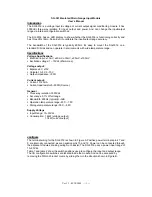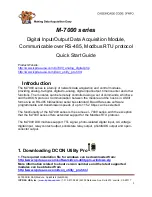
The degree of tilt of the front body and boom is further increased by the deflection of
the tyres. This is illustrated in Figure 1. For instance, a 5
O
ground side slope may
result in chassis tilt of say 7
O
.
The LMI determines and displays the degree of body tilt measured by a sensor that is
attached to the front body. This sensor measures the angle of the front body, not the
angle of slope of the ground. When the crane is un-laden, the boom fully down, and
the crane is at zero articulation, the body will be close to the same angle as the
ground, for up to 5
o
slope.
This body tilt angle (the “Roll”) is used by the LMI to derate the crane as this is also
the angle the boom has been tilted sideways. When lifting or carrying a load in slope
situations, the tilt of the body will change as the weight of load is taken by the crane.
In most circumstances, this change will be further derate the crane. Hence in planning
a lift, it is important to be conservative on lift capacity in any circumstance where the
lift will induce significant front body tilt.
SPECIFICATIONS
ATTACHMENT MASSES
Single part hook block
PL16M2090
30 kg
Four/six part hook block
PLMXA3033
230 kg
Rhino Hook
PLMXF3015
25 kg
9 tonne hook
PP2190200
10 kg
25 tonne hook
PP2087500
26 kg
12 tonne spreader bar
PL16A3035
94 kg
15 tonne spreader bar
PL15A8023
107 kg
Adapter - Flyjib & Manbasket
PLMXF3018
25 kg
Flyjib (3m)
PL16A3056
79 kg
Mount arm - Manbasket
C2061
85 kg
Manbasket C2062
130
kg
NOTE : These masses apply only to Terex Australia Pty Ltd supplied
equipment
.
HOOK BLOCK
Hook Block:
Number of
Falls of Rope
Maximum Hook
Block RC (kg)
1 4200
2 8400
4
16800
6
25000
T139154-D
9











































